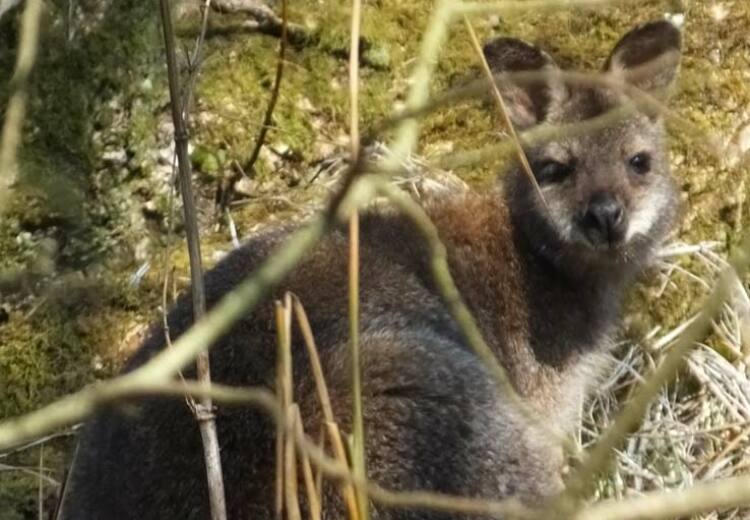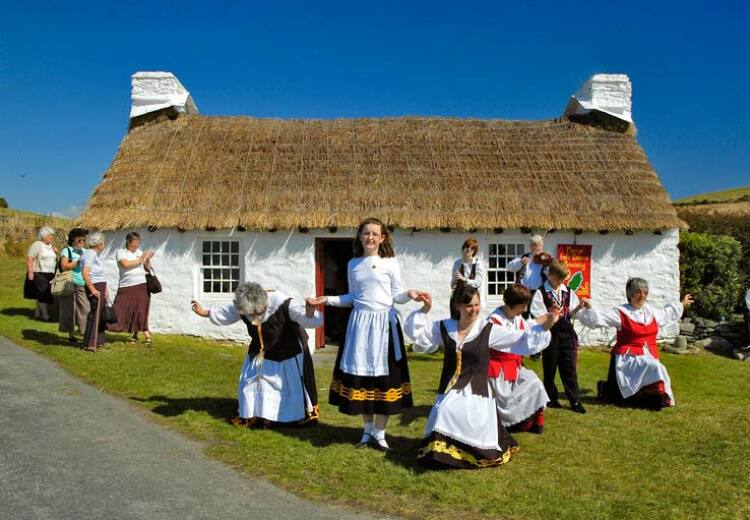IT"S late in the season to finish up with autumn digging but there you have it, the last week of November and my final allotment bed has just been dug. Whether due to miserable weather or conflicting plans I just haven’t been able to get up and finish the job.
But even gale-force winds couldn’t stop me this week and I tackled my furthest bed with a garden fork, a thermos of hot tea and a firmly anchored safety line so the gusts wouldn’t carry me off the side of the hill. Well maybe not the safety line, but I certainly could have used one!
Though it’s less than a month away from official winter, I do have quite a bit of veg still standing up against the elements. Brussels sprouts and Purple Sprouting Broccoli are holding up well as is the Kale which has been very handy as a late season green. Some of the Perpetual Spinach and Swiss Chard are also trucking along and two rows of Kohlrabi are sitting nicely and just waiting to be snapped up for hearty December meals.
All in all quite a good amount of veg to keep us happy, healthy and involved in the garden over the cold months ahead. Even so, most of my beds have now been cleared and forked over and they’ll be lying quiet under their blankets of seaweed or manure until late March. Four months seems like such a long time but thoughts of next year’s planting season and harvest are already on my mind, even more so with the dangerous pile of seed catalogues on my desk.
It’s scarily easy to spend a small fortune on seeds and sundries, and looking at my current seed inventory I know that I need to create a solid growing plan for next year and make sure that I use as much of what I already have before making more purchases. The best way for me to get my head around the next year’s planting is to review the last harvest – thinking about what grew well, what we enjoyed eating, and if there was anything new that I’d like to try out.
I then move on to actually drawing out my allotment beds and planning what I want to put where, also considering crop rotations, crop height and position of the sun. This way it makes my garden much easier to visualise and keeps the amount I want to grow more realistic. My plan might be revised two, three, or a dozen times over the winter but at least I have an initial idea and can work on from there.
My best vegetables this summer were the ones that thrived in damp and cooler temperatures. While the rest of the UK seems to have had a few heat waves, we on the Isle of Man enjoyed highs of about 15°C. Needless to say, some of my crops didn’t do so well. Sweet -corn and tomatoes performed miserably and my climbing French beans didn’t even begin producing until early September.
I figure that the only thing you can do is trudge on and wish for better weather next year – and perhaps research some hardier varieties, just in case. This year I tried several new types of fruit and veg, some of which were real winners. I was very impressed with Quinoa ‘Temuco’ and found that it does quite well in wet and windy weather, though it’s really meant to grow in a warmer environment.
It’s a grain we’ve come to use regularly so it’s definitely made the cut. I’m also crossing my fingers that my three Cape Gooseberry bushes will survive the winter. Though they didn’t produce many ripe berries this year, I’m hoping they’ll do much better in some proper summer sunshine. Other successes were Spaghetti Squash which grew mountains of delicious golden fruit, Gherkins which made crisp pickles, and Brussels Sprouts which I was surprised to find really tasty.
But experimenting sometimes leads to crops which you’re happy to have tried out but not planning on growing again. Such is my experience with Strawberry Spinach, an unusual green related to wild plants such as Lambs Quarter. It’s unique and grows prolifically but I found the thick stems and small leaves too fiddly, and its spinach-flavoured strawberries not the most palatable of fruits. Some new varieties of plants that I’d like to try growing in 2012 are actually not for eating but rather for naturally colouring my soaps.
I’ve begun using both woad and madder root powder for blue, green and pink colours and want to have a go at growing and processing these botanicals myself. I have a good sized bed behind the house that I’m setting aside for them and with any luck will be able to self-source most of the product I’ll need for next year. And as for new veg, I’ve decided to give up my ordinary green beans and go with a purple-podded variety whose pods will be easier for me to spot against dense green foliage.
I’ve also tried some strange and knobbly potatoes given to me by a friend this summer and am officially converted. So it’s out with the King Edwards as main-crops and in with Pink Fir Apples. With the wind whipping outside and the rain beating against the house it’s hard to imagine days of soft golden light and green leaves pushing up from the soil.
But winter is really just a blink of the eye and I know that spring planting will be here sooner than I can imagine. Because I’m the type of person who enjoys an organised garden, growing new plants and saving money I’ll be spending these cold and dark days continuing to reflect on my past growing year and planning for the next. Come warmer days I’ll be prepared and excited to dig in for another bountiful year at the allotment.
Tanya Highet is a keen gardener and secretary at the Laxey and Lonan Allotment. She enjoys growing her own, foraging for wild foods, soap making and writing about her exploits on her blog, Lovely Greens: http://tanyahighet.blogspot.com








